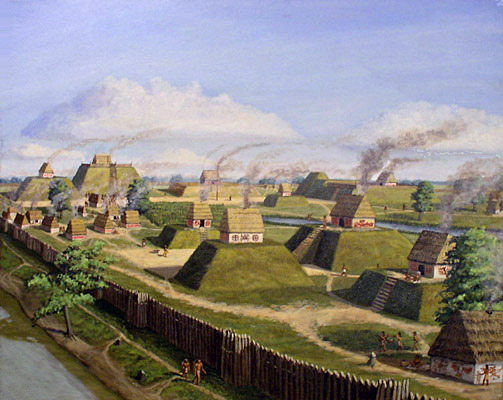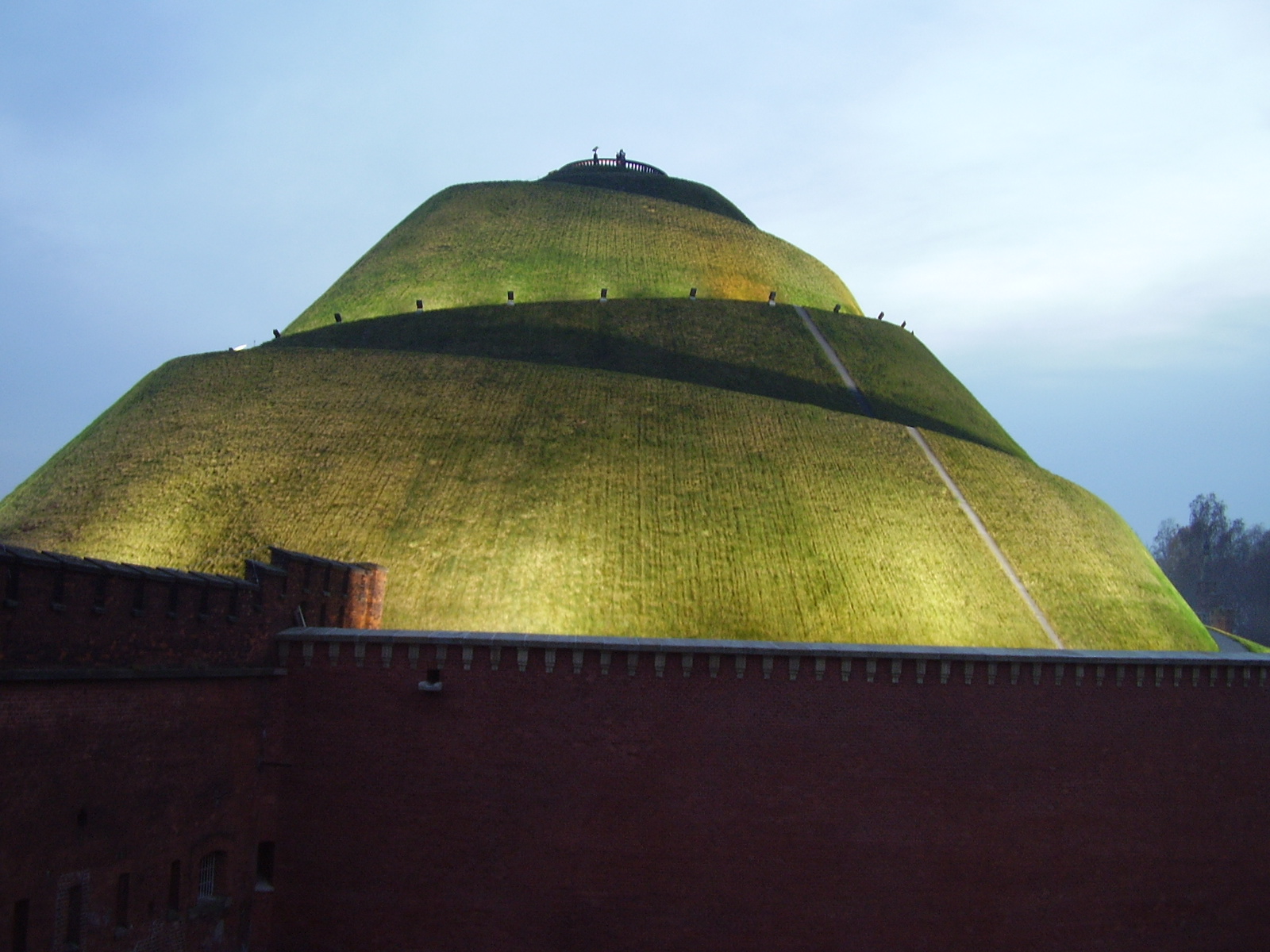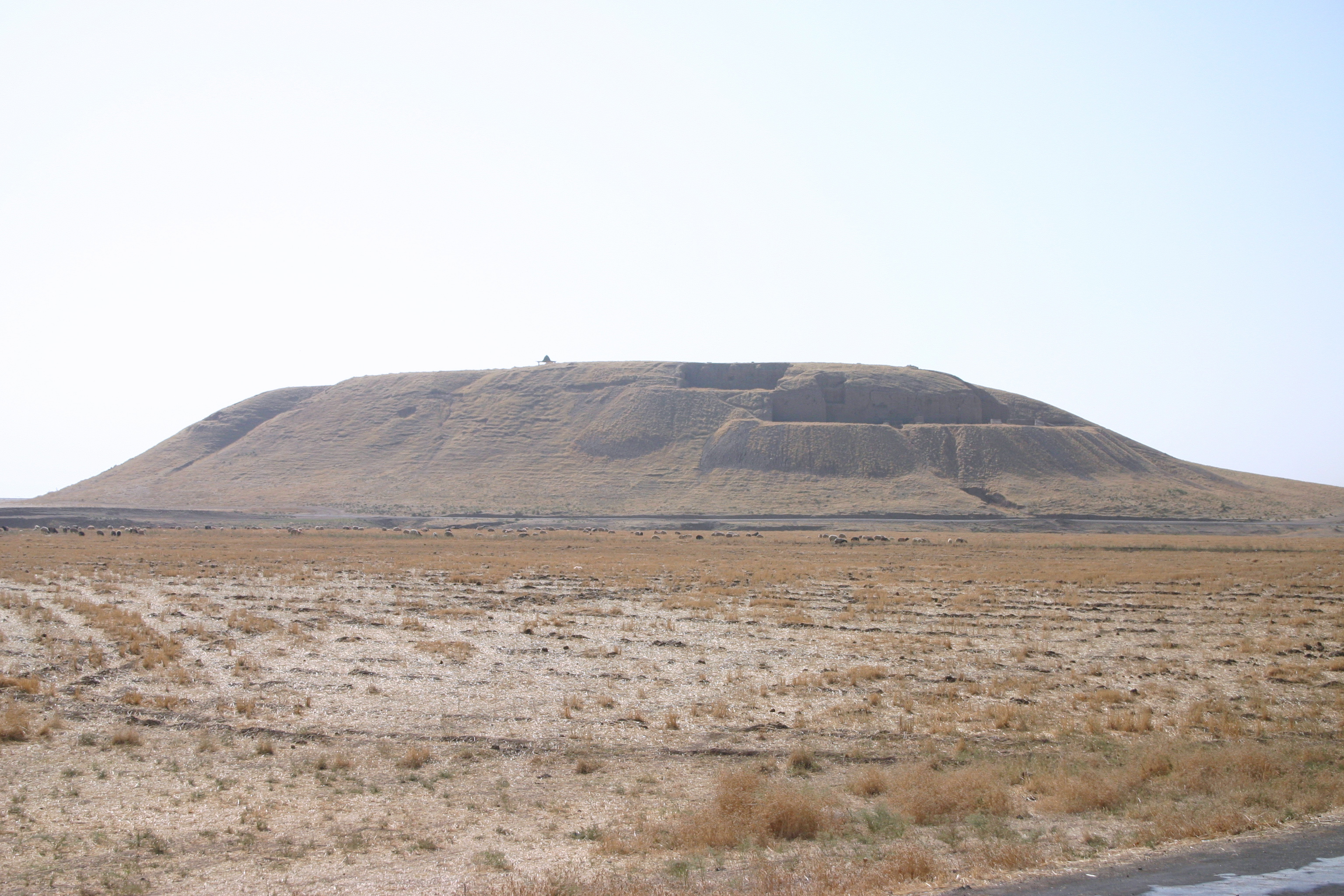|
Mound
A mound is a wikt:heaped, heaped pile of soil, earth, gravel, sand, rock (geology), rocks, or debris. Most commonly, mounds are earthen formations such as hills and mountains, particularly if they appear artificial. A mound may be any rounded area of topography, topographically higher elevation on any surface. Artificial mounds have been created for a variety of reasons throughout history, including habitation (see Tell (archaeology), Tell and Terp), ceremonial (platform mound), burial (tumulus), and commemorative purposes (e.g. Kościuszko Mound). Archaeology North American archaeology In the archaeology of the United States and Canada, a mound is a deliberately constructed elevated earthen structure or earthworks (engineering), earthwork, intended for a range of potential uses. In European and Asian archaeology, the word "tumulus" may be used as a synonym for an artificial hill, particularly if the hill is related to particular burial customs. While the term "mound" may ... [...More Info...] [...Related Items...] OR: [Wikipedia] [Google] [Baidu] |
Tumulus
A tumulus (: tumuli) is a mound of Soil, earth and Rock (geology), stones raised over a grave or graves. Tumuli are also known as barrows, burial mounds, mounds, howes, or in Siberia and Central Asia as ''kurgans'', and may be found throughout much of the world. A cairn, which is a mound of stones built for various purposes, may also originally have been a tumulus. Tumuli are often categorised according to their external apparent shape. In this respect, a long barrow is a long tumulus, usually constructed on top of several burials, such as passage graves. A round barrow is a round tumulus, also commonly constructed on top of burials. The internal structure and architecture of both long and round barrows have a broad range; the categorization only refers to the external apparent shape. The method of may involve a dolmen, a cist, a mortuary enclosure, a mortuary house, or a chamber tomb. Examples of barrows include Duggleby Howe and Maeshowe. Etymology The word ''tumulus'' ... [...More Info...] [...Related Items...] OR: [Wikipedia] [Google] [Baidu] |
Effigy Mound
An effigy mound is a raised pile of earth built in the shape of a stylized animal, symbol, religious figure, human, or other figure. The Effigy Moundbuilder culture is primarily associated with the years 550–1200 CE during the Late Woodland Period, although radiocarbon dating has placed the origin of certain mounds as far back as 320 BCE. Effigy mounds were constructed in many Native American cultures. Scholars believe they were primarily for religious purposes, although some also fulfilled a burial mound function. The builders of the effigy mounds are usually referred to as the Mound Builders. Over 3200 animal-shaped effigy mounds have been identified by the Wisconsin Historical Society in the upper midwest. Native North American effigy mounds have been compared to the large-scale geoglyphs such as the Nazca lines of Peru. History Early European observations Effigy mounds are limited to the Northern and Eastern United States, and most likely the French were the first ... [...More Info...] [...Related Items...] OR: [Wikipedia] [Google] [Baidu] |
Platform Mound
A platform mound is any earthwork or mound intended to support a structure or activity. It typically refers to a flat-topped mound, whose sides may be pyramidal. In Eastern North America The indigenous peoples of North America built substructure mounds for well over a thousand years, starting in the Archaic period and continuing through the Woodland period. Many different archaeological cultures ( Poverty Point culture, Troyville culture, Coles Creek culture, Plaquemine culture and Mississippian culture) of North Americas Eastern Woodlands are specifically well known for using platform mounds as a central aspect of their overarching religious practices and beliefs. These platform mounds are usually four-sided truncated pyramids, steeply sided, with steps built of wooden logs ascending one side of the earthworks. When Europeans first arrived in North America, the peoples of the Mississippian culture were still using and building platform mounds. Documented uses for Mi ... [...More Info...] [...Related Items...] OR: [Wikipedia] [Google] [Baidu] |
Mississippian Culture
The Mississippian culture was a collection of Native American societies that flourished in what is now the Midwestern, Eastern, and Southeastern United States from approximately 800 to 1600 CE, varying regionally. It was known for building large, earthen platform mounds, and often other shaped mounds as well. It was composed of a series of urban settlements and satellite villages linked together by loose trading networks. The largest city was Cahokia, believed to be a major religious center, located in what is present-day southern Illinois. The Mississippian way of life began to develop in the Mississippi River Valley (for which it is named). Cultures in the tributary Tennessee River Valley may have also begun to develop Mississippian characteristics at this point. Almost all dated Mississippian sites predate 1539–1540 (when Hernando de Soto explored the area), with notable exceptions being Natchez communities. These maintained Mississippian cultural practices into the 1 ... [...More Info...] [...Related Items...] OR: [Wikipedia] [Google] [Baidu] |
Grave Creek Mound
The Grave Creek Mound in the Ohio River Valley in West Virginia is one of the largest conical-type burial mounds in the United States, now standing high and in diameter. The builders of the site, members of the Adena culture, moved more than 60,000 tons of dirt to create it about 250–150 BC. Present-day Moundsville has developed around it near the banks of the Ohio River. The first recorded excavation of the mound took place in 1838, and was conducted by local amateurs Abelard Tomlinson and Thomas Biggs. The largest surviving mound among those built by the Adena, this was designated a National Historic Landmark in the mid-20th century. In 1978 the state opened the Delf Norona Museum at the site. It displays numerous artifacts and interprets the ancient Adena Culture. In 2010, under an agreement with the state, the US Army Corps of Engineers gave nearly 450,000 artifacts to the museum for archival storage. These were recovered in archeological excavations at the site of t ... [...More Info...] [...Related Items...] OR: [Wikipedia] [Google] [Baidu] |
Adena Culture
The Adena culture was a pre-Columbian Native American culture that existed from 500 BCE to 100 CE, in a time known as the Early Woodland period. The Adena culture refers to what were probably a number of related Native American societies sharing a burial complex and ceremonial system. The Adena culture was centered on the location of the modern state of Ohio, but also extended into contiguous areas of Kentucky, West Virginia, Indiana, Illinois, Southern Wisconsin and parts of extreme western Pennsylvania. Importance The Adena culture was named for the large mound on Thomas Worthington's early 19th-century estate located near Chillicothe, Ohio, which he named "Adena". The culture is the most prominently known of a number of similar cultures in eastern North America that began mound building ceremonialism at the end of the Archaic period. The geographic range of the Adena sites is centered on central and southern Ohio, with further sites in contiguous areas of the surrounding ... [...More Info...] [...Related Items...] OR: [Wikipedia] [Google] [Baidu] |
Kościuszko Mound
Kościuszko Mound () is an artificial mound in Kraków, Poland. It was erected by Kraków, Cracovians in commemoration of the Polish national leader Tadeusz Kościuszko, and modelled after Kraków's prehistoric mounds of Krakus Mound, Krak and Wanda Mound, Wanda. A serpentine path leads to the top, approximately above sea level, with a panoramic view of the Vistula River and the city. History It was completed in November 1823. The location selected for the monument was the natural Blessed Bronisława Hill (), also known as Sikornik, situated in the western part of Kraków's Zwierzyniec (district), Zwierzyniec District. Kościuszko Mound is one of Kraków's four memorial mounds, consisting of two prehistoric mounds, Krakus Mound and Wanda Mound, and two modern ones, Piłsudski Mound and Kościuszko Mound. The founding ceremony of the Kościuszko Mound took place on 16 October 1820. The construction was financed by donations froPolesliving in all territories of Poland Partitio ... [...More Info...] [...Related Items...] OR: [Wikipedia] [Google] [Baidu] |
Tell (archaeology)
In archaeology, a tell (from , ', 'mound' or 'small hill') is an artificial topographical feature, a mound consisting of the accumulated and stratified debris of a succession of consecutive settlements at the same site, the refuse of generations of people who built and inhabited them and natural sediment. Tells are most commonly associated with the ancient Near East but are also found elsewhere, such as in Southern Europe, Southern and parts of Central Europe, from Greece and Bulgaria to Hungary and Spain,, see map. and in North Africa. Within the Near East they are concentrated in less arid regions, including Upper Mesopotamia, the Southern Levant, Anatolia and Iran, which had more continuous settlement. Eurasian tells date to the Neolithic, the Chalcolithic and the Bronze and Iron Ages. In the Southern Levant the time of the tells ended with the conquest by Alexander the Great, which ushered in the Hellenistic period with its own, different settlement-building patterns. Many t ... [...More Info...] [...Related Items...] OR: [Wikipedia] [Google] [Baidu] |
Terp
A ''terp'', also known as a ''wierde, woerd, warf, warft, werf, werve, wurt'' or ''værft'', is an artificial dwelling mound found on the North European Plain that has been created to provide safe ground during storm surges, high tides and sea or river flooding. The various terms used reflect the regional dialects of the North European region. These mounds occur in the coastal parts of the Netherlands (in the provinces of Zeeland, Friesland and Groningen (province), Groningen), in southern parts of Denmark and in the north-western parts of Germany where, before Dyke (construction), dykes were made, floodwater interfered with daily life. These can be found especially in the region East Frisia, Ostfriesland and Kreis Nordfriesland (district), Nordfriesland in Germany. In Kreis Nordfriesland on the Halligen, people still live on terps unprotected by dykes. Terps also occur in the Rhine and Meuse River, Meuse river plains in the central part of the Netherlands. Furthermore, ter ... [...More Info...] [...Related Items...] OR: [Wikipedia] [Google] [Baidu] |
Petroforms
Petroforms, also known as boulder outlines or boulder mosaics, are human-made shapes and patterns made by lining up large rocks on the open ground, often on quite level areas. Petroforms in North America were originally made by various Native American and First Nation tribes, who used various terms to describe them. Petroforms can also include a rock cairn or inukshuk, an upright monolith slab, a medicine wheel, a fire pit, a desert kite, sculpted boulders, or simply rocks lined up or stacked for various reasons. Old World petroforms include the Carnac stones and many other megalithic monuments. Definition Petroforms are shapes and geometrical patterns made from arranging large rocks and boulders, often over large areas of open ground, unlike the smaller petroglyphs and graphs which are inscribed on rock surfaces. They were originally made in North America by native peoples for astronomical, religious, sacred, healing, mnemonic devices, and teaching purposes. The specific na ... [...More Info...] [...Related Items...] OR: [Wikipedia] [Google] [Baidu] |
Hills
A hill is a landform that extends above the surrounding terrain. It often has a distinct summit, and is usually applied to peaks which are above elevation compared to the relative landmass, though not as prominent as mountains. Hills fall under the category of slope landforms. Terminology The distinction between a hill and a mountain is unclear and largely subjective, but a hill is universally considered to be not as tall, or as steep as a mountain. Geographers historically regarded mountains as hills greater than above sea level. In contrast, hillwalkers have tended to regard mountains as peaks above sea level. The ''Oxford English Dictionary'' also suggests a limit of and Whittow states "Some authorities regard eminences above as mountains, those below being referred to as hills." Today, a mountain is usually defined in the UK and Ireland as any summit at least high, while the UK government's Countryside and Rights of Way Act 2000 defined mountainous areas (for ... [...More Info...] [...Related Items...] OR: [Wikipedia] [Google] [Baidu] |
Archaeology
Archaeology or archeology is the study of human activity through the recovery and analysis of material culture. The archaeological record consists of Artifact (archaeology), artifacts, architecture, biofact (archaeology), biofacts or ecofacts, archaeological site, sites, and cultural landscapes. Archaeology can be considered both a social science and a branch of the humanities. It is usually considered an independent academic discipline, but may also be classified as part of anthropology (in North America – the four-field approach), history or geography. The discipline involves Survey (archaeology), surveying, Archaeological excavation, excavation, and eventually Post excavation, analysis of data collected, to learn more about the past. In broad scope, archaeology relies on cross-disciplinary research. Archaeologists study human prehistory and history, from the development of the first stone tools at Lomekwi in East Africa 3.3 million years ago up until recent decades. A ... [...More Info...] [...Related Items...] OR: [Wikipedia] [Google] [Baidu] |








